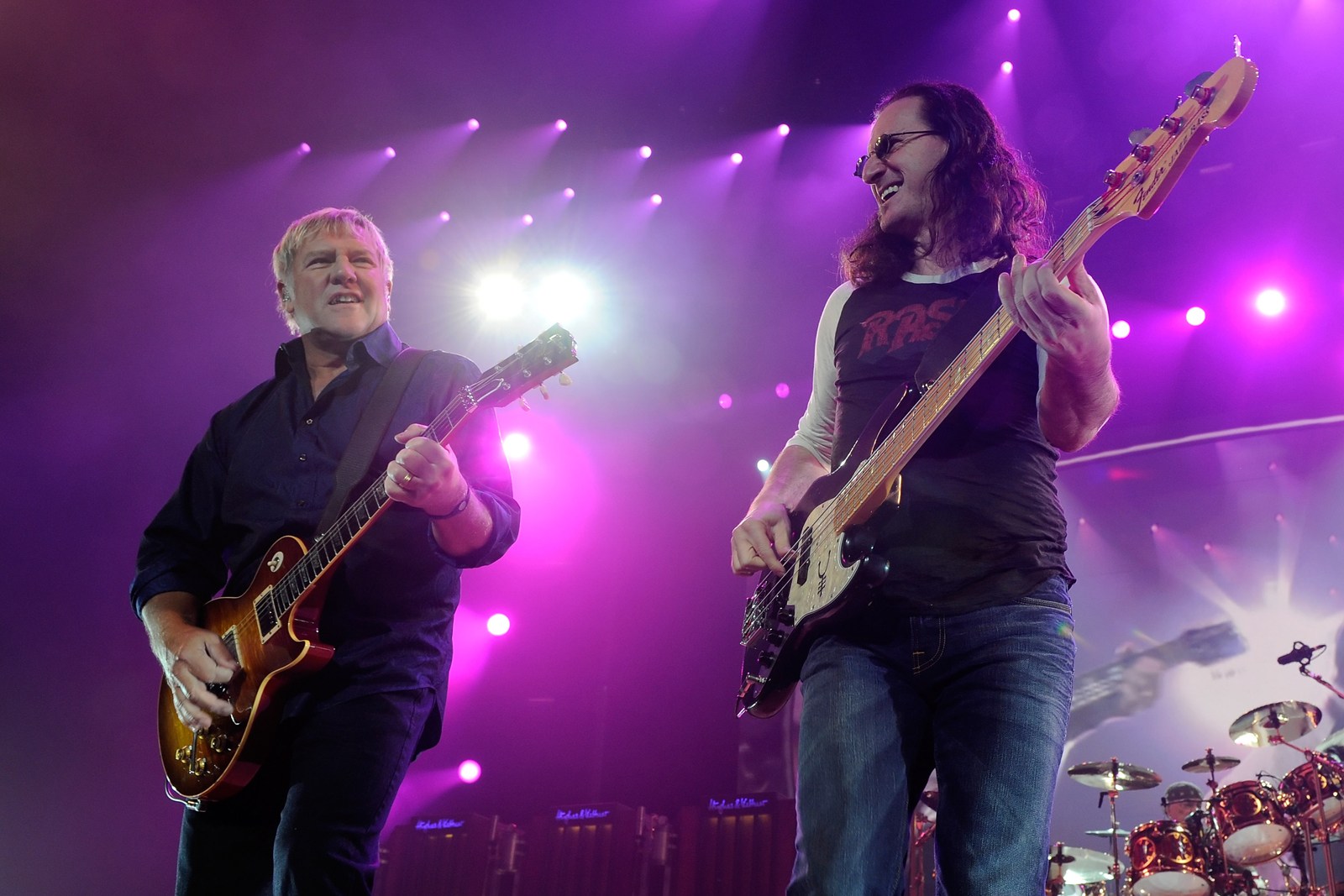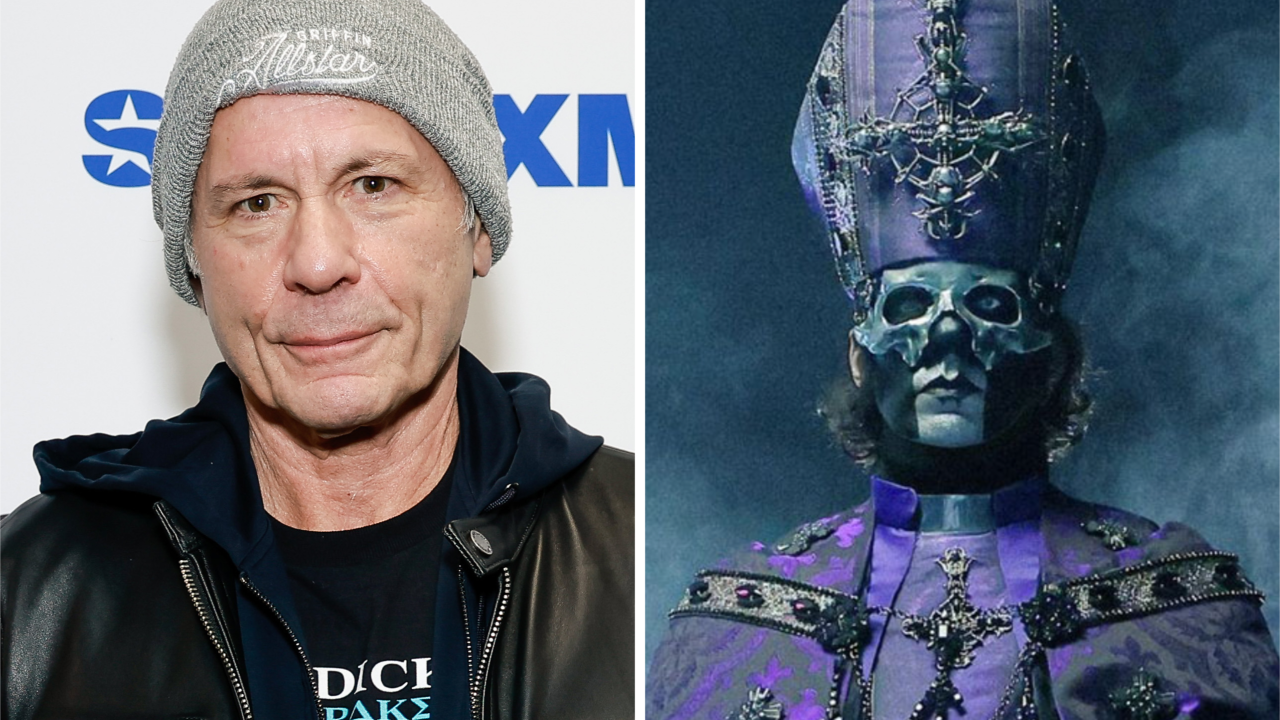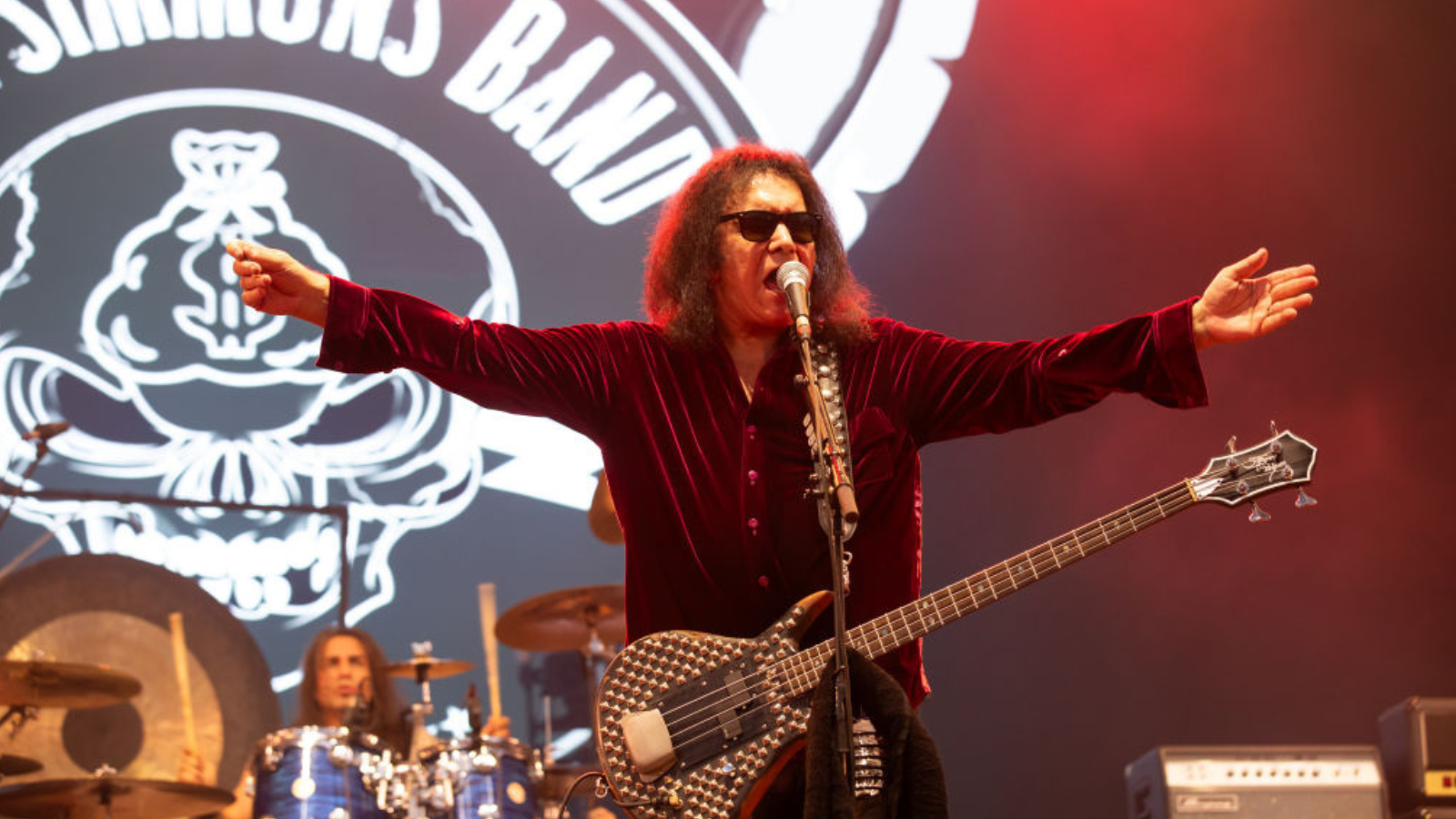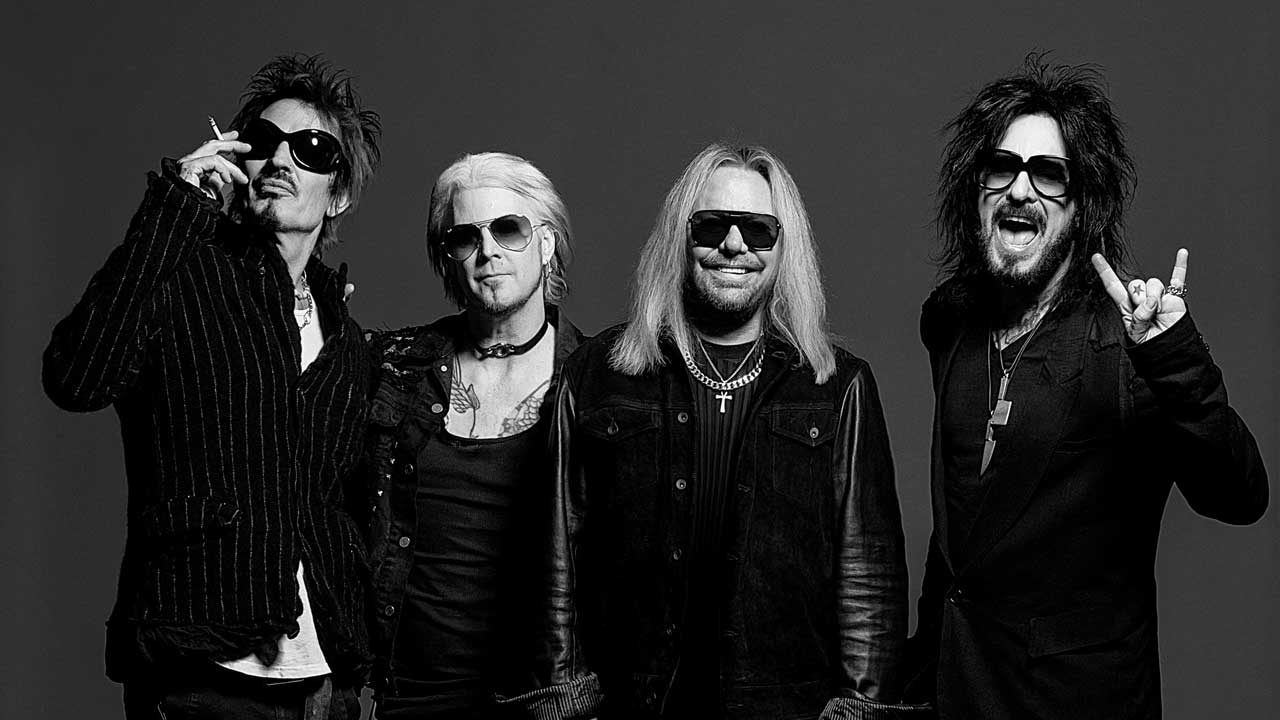
Feature Photo: Raph_PH, CC BY 2.0 , via Wikimedia Commons
Putting together a list of the 20 most beautiful songs of all time is a daunting task, one bound to fall short simply due to the sheer number of extraordinary songs that have been written throughout musical history. It could easily be argued that millions of songs have been composed, recorded, and released that transcend beauty in all its forms. Narrowing that vast collection down to just 20 was something we hesitated to do. However, the purpose of creating such a list is not to claim these are the only beautiful songs in existence but rather to highlight a selection that may introduce listeners to works of art they have never heard before. If we can turn someone on to a song of such profound beauty—one of the masterpieces listed here—then we have done our job.
We are not suggesting that these are the only 20 songs of beauty; rather, they represent some of the most breathtaking compositions ever written, recorded, and performed. Beauty, as the saying goes, lies in the eye of the beholder. A song that touches one person deeply due to personal experiences may not carry the same weight for another. Yet, it’s hard to deny that every song on this list delivers an emotional impact from a variety of perspectives. Beauty can be found in many emotions—longing, sadness, happiness, regret, sorrow, joy—and some of the most powerful songs resonate deeply within all of these feelings. That was our guiding principle in assembling this collection.
We intentionally avoided classical music, as including it would have made the selection process insurmountable. Because this is a rock-focused site, we primarily stuck to rock and pop songs. However, when a timeless standard—such as “Autumn Leaves”—was recorded by a rock artist like Eric Clapton, we felt it deserved inclusion. Even within the jazz and traditional pop world, there exists an overwhelming abundance of stunningly beautiful songs, making it especially difficult to exclude so many classics.
Rather than continuing to apologize for the songs we had to leave out, we hope you will celebrate with us the ones we have chosen. We invite you to find joy in revisiting these songs, reliving the emotions they evoke. For younger listeners, we hope this list helps introduce you to songs that have stood the test of time and continue to move audiences with their undeniable beauty.
# 20 – Songbird – Christine McVie
Christine McVie captured something timeless when she wrote “Songbird” for Fleetwood Mac’s Rumours, distilling love and devotion into a song so delicate that it barely needed more than her voice and a piano. Unlike the band’s famously intricate arrangements, this track required only McVie and a Steinway grand, recorded live in an empty Zellerbach Auditorium in Berkeley, California, late into the night. Producer Ken Caillat meticulously positioned microphones throughout the space to enhance the natural resonance of the performance, allowing McVie’s vocals to float with an almost sacred stillness. The result was one of the most intimate recordings in Fleetwood Mac’s catalog, a song that, despite never being released as a single, became one of McVie’s defining compositions.
The lyrics of “Songbird” were as unguarded as its arrangement, offering love without hesitation or demand. When McVie sang, “For you, there’ll be no more crying,” she wasn’t pleading—she was reassuring. The song’s central metaphor of the songbird symbolized both freedom and unwavering commitment, suggesting love that endures beyond personal struggle. Within Rumours, an album built on heartbreak, betrayal, and longing, this song stood apart as a moment of peace—not love torn apart, but love given freely. As the opening song in this list, it sets the perfect tone, showcasing beauty in its purest form through McVie’s sincerity and restraint.
The music needed nothing more than McVie’s piano, but Lindsey Buckingham later added subtle acoustic guitar overdubs, ensuring the track retained its warmth without losing its fragility. While many of Rumours’ tracks were sculpted through multiple takes and layered production, “Songbird” was untouched, preserved exactly as it was played. McVie performed the song countless times in concert, always standing alone at the piano, and it became one of her most treasured works—an anthem of quiet, unconditional love. Even after her passing, “Songbird” remains an enduring tribute to her gift for writing music that felt deeply personal yet universally understood.
Read More: Top 10 Fleetwood Mac Songs Sung By Christine McVie
# 19 – Heaven Can Wait – Meat Loaf
Meat Loaf’s “Heaven Can Wait” delivered one of the most tender moments on Bat Out of Hell, an album known for its larger-than-life theatricality and high-octane energy. Written by Jim Steinman and recorded at Bearsville Studios in Woodstock, New York, the song was a striking departure from the album’s bombastic rock anthems, instead relying on a delicate piano arrangement and Meat Loaf’s deeply emotive vocal performance. Producer Todd Rundgren scaled back the over-the-top production that characterized much of Bat Out of Hell, allowing the song to breathe with a sense of vulnerability and grandeur at the same time. Though it was never released as a single, “Heaven Can Wait” became one of Meat Loaf’s most beloved deep cuts, frequently performed live and standing as a testament to his ability to deliver pure emotion through song.
Lyrically, “Heaven Can Wait” painted a picture of a soul suspended between worlds, unwilling to leave behind the beauty of life despite knowing that something greater may lie ahead. The line “I’ve got a taste of paradise, I’m never gonna let it slip away” suggested a longing to hold onto something fleeting, whether love, innocence, or existence itself. Unlike the resignation found in Christine McVie’s “Songbird,” which embraced love’s permanence beyond time, Meat Loaf’s delivery carried a sense of urgency—he wasn’t ready to move on just yet. The lyrics balanced spiritual imagery with earthly devotion, making the song feel both deeply personal and universally resonant.
Musically, the song relied on Roy Bittan’s piano work, which provided a sweeping foundation that ebbed and flowed beneath Meat Loaf’s soaring vocals. The orchestral elements were understated compared to the operatic flourishes elsewhere on the album, creating a sense of intimacy rather than excess. Compared to “Songbird,” which thrived in its quiet simplicity, “Heaven Can Wait” had a cinematic quality, gently building toward an emotional peak without ever losing its sense of restraint. As one of the most emotionally powerful moments in Meat Loaf’s discography, the song proved that beauty in rock music isn’t always about spectacle—sometimes, it’s about sincerity.
Read More: Top 10 Meat Loaf Songs
# 18 – Wild Is The Wind – David Bowie
David Bowie reimagined “Wild Is the Wind” for his 1976 album Station to Station, transforming the song into one of the most hauntingly beautiful performances of his career. Originally written by Dimitri Tiomkin and Ned Washington for the 1957 film of the same name, the song had been recorded by Johnny Mathis and later made famous by Nina Simone. Bowie’s version was recorded at Cherokee Studios in Los Angeles and produced by Bowie and Harry Maslin, featuring a stripped-down arrangement that allowed his voice to take center stage. Released as a single in 1981, the song became one of his most celebrated vocal performances, with critics praising its intensity and vulnerability.
Lyrically, “Wild Is the Wind” painted love as something fragile yet uncontrollable, comparing it to the unpredictable force of nature. The line “Like a leaf clings to the tree, oh my darling, cling to me” captured the desperation in Bowie’s delivery—love in this song wasn’t gentle, but something one held onto for survival. Unlike the peaceful devotion found in Christine McVie’s “Songbird,” this song carried a darker longing, as if the love it described could vanish at any moment. The imagery of wind, trees, and mandolins created a sense of movement, making the song feel almost untethered, mirroring the uncertainty in its lyrics.
Musically, the song’s delicate guitar work, subtle piano, and atmospheric production heightened the sense of yearning. Earl Slick’s guitar flourishes wove through the track like the wind itself, while Bowie’s vocal phrasing shifted between quiet restraint and dramatic intensity. Compared to “Heaven Can Wait” by Meat Loaf, which framed its emotions in grand, sweeping orchestration, “Wild Is the Wind” relied on rawness and space, proving that sometimes the most beautiful moments in rock music come from what’s left unsaid. As one of Bowie’s most emotionally arresting recordings, the song solidified his ability to breathe new life into existing material, making it uniquely his own.
Read More: Complete List Of David Bowie Songs From A to Z
# 17 – I Will Always Love You – Lone Justice – featuring Maria McKee
When I began writing this list, I knew I had to include something recorded by Maria McKee because, undoubtedly, she has one of the most beautiful voices I’ve ever heard. Additionally, she’s one of the most stunning song writers of the past 50 years. This very simple recording of one of the most famous songs of all time was just released on the first Lone Justice album to be released in over 40 years. I don’t want to say much more about it, I’d rather you just listen to it and you will understand why I’ve included it here.
Read More: 10 Maria McKee Songs That Will Leave You Mesmerized
# 16 – MacArthur Park – Richard Harris
Richard Harris delivered one of the most theatrical performances of his career with “MacArthur Park,” a song that blurred the line between rock, orchestral pop, and high drama. Written by Jimmy Webb and recorded at Sound Recorders in Hollywood, California, the track was an ambitious, nearly seven-and-a-half-minute suite that unfolded like a cinematic epic. Harris, best known as an actor, was an unlikely choice for a lead vocalist, but his expressive, almost spoken-word delivery gave the song its signature emotional weight. Released as a single in 1968, the track reached No. 2 on the Billboard Hot 100, solidifying its status as one of the most ambitious and divisive songs in rock history.
Lyrically, “MacArthur Park” used surreal imagery to convey the devastation of lost love, with “Someone left the cake out in the rain” serving as one of the most famously cryptic lines in rock. The song painted heartbreak in abstract terms, comparing memories to a melting landscape where time and emotion intertwined. Unlike David Bowie’s “Wild Is the Wind,” which framed love as an untamed force, “MacArthur Park” mourned love’s passing with an almost operatic intensity. The mention of a “yellow cotton dress” and “birds like tender babies in your hands” added a dreamlike quality, making the song feel like a fragmented memory slipping away.
Musically, the track’s lavish orchestration, shifting time signatures, and sweeping crescendos set it apart from conventional rock ballads. The arrangement, conducted by Jim Webb himself, moved between hushed reflection and grand, symphonic peaks, mirroring the emotional turbulence of the lyrics. Compared to “Heaven Can Wait” by Meat Loaf, which conveyed longing through restrained piano and vocal dynamics, “MacArthur Park” exploded with full orchestral flourishes, building toward a dramatic climax. Despite its unconventional structure, the song became a landmark recording, later covered by Donna Summer in a disco version that took it to No. 1 on the Billboard Hot 100 in 1978. Harris’s original, however, remains one of the most ambitious and beautifully eccentric recordings in rock history, a testament to the idea that beauty in music can be just as much about excess as it is about simplicity.
Read More: Top 10 Jimmy Webb Songs
# 15 – Autumn Leaves – Eric Clapton
Eric Clapton offered a deeply introspective take on “Autumn Leaves” for his 2010 album Clapton, delivering a restrained and poignant rendition of the jazz standard. Originally composed by Joseph Kosma with lyrics by Jacques Prévert in French and later adapted into English by Johnny Mercer, the song had been recorded by countless artists, from Nat King Cole to Eva Cassidy. Clapton’s version was recorded at Olympic Studios in London and produced by Doyle Bramhall II and Justin Stanley, featuring a deliberately sparse arrangement that allowed his guitar work and understated vocals to guide the song’s melancholic mood.
The lyrics of “Autumn Leaves” captured the ache of loss through natural imagery, with the falling leaves serving as a metaphor for fading love and the passage of time. The line “I miss you most of all, my darling, when autumn leaves start to fall” encapsulated the depth of sorrow, contrasting fleeting summer warmth with the inevitable chill of winter. Unlike the grandiose heartbreak found in Richard Harris’s “MacArthur Park,” which framed lost love in surreal and abstract terms, Clapton’s delivery was direct and unembellished, relying on emotional nuance rather than sweeping drama. His vocals, weary yet tender, suggested reflection rather than raw pain, making the song feel like a quiet resignation to the past rather than a plea to reclaim it.
Musically, Clapton’s arrangement leaned into the song’s jazz origins, with soft piano chords, subtle brush drumming, and his signature blues-inflected guitar phrasing carrying the melody. Compared to David Bowie’s “Wild Is the Wind,” which built its emotional intensity through vocal crescendos and sweeping instrumentation, “Autumn Leaves” thrived in restraint, proving that beauty in rock music is often found in simplicity. This version stood apart from many of Clapton’s earlier recordings, trading the fiery blues solos of his past for something more delicate, a testament to his ability to convey emotion with minimal ornamentation. As one of the most quietly devastating songs in this collection, “Autumn Leaves” exemplified how the passage of time makes loss feel both inevitable and everlasting.
Read More: Top 10 Eric Clapton Love Songs
# 14 – If You Know What I Mean – Neil Diamond
Neil Diamond crafted a deeply nostalgic and introspective ballad with “If You Know What I Mean,” released as the lead single from his 1976 album Beautiful Noise. Produced by Robbie Robertson of The Band, the track was recorded at Quadraphonic Sound Studios in Nashville, Tennessee, with a lineup of seasoned session musicians that included Richard Bennett on guitar, Bob Gaudio on keyboards, and Jim Keltner on drums. The song became one of Diamond’s most poignant reflections on memory and longing, reaching No. 1 on the Billboard Easy Listening chart and No. 11 on the Billboard Hot 100.
The lyrics of “If You Know What I Mean” painted a picture of reminiscence, evoking moments from the past with strikingly cinematic imagery. Lines like “And the radio played like a carnival tune / As we lay in our bed in the other room” captured the essence of young love and fleeting innocence, while the refrain “If you know what I mean” suggested an understanding that only the listener and singer could share. This song’s wistful tone paralleled the reflective sadness of Eric Clapton’s “Autumn Leaves”, though Diamond’s approach was more rooted in storytelling than in poetic melancholy. The lyrics spoke of memories that once felt vivid but had begun to slip away, a theme that resonated deeply within the broader context of the Beautiful Noise album, which celebrated the power of music as a time machine to the past.
Musically, “If You Know What I Mean” combined a lush orchestral arrangement with Diamond’s signature baritone, creating an emotional depth that mirrored the song’s themes of nostalgia and regret. Compared to the grander, more theatrical scope of Richard Harris’s “MacArthur Park,” Diamond’s ballad relied on restraint, with sweeping string sections and understated piano lines elevating the emotional weight. The song’s reflective mood, combined with its evocative lyrics, made it a fitting inclusion on this list of the most beautiful rock songs, standing as a testament to Diamond’s ability to capture the passage of time and the longing for what once was.
Read More: Top 10 Neil Diamond Songs
# 13 – Out In The Country – Three Dog Night
Three Dog Night released “Out in the Country” in 1970 as the second single from their album It Ain’t Easy. Written by Paul Williams and Roger Nichols, the song embraced a theme of escape, offering a contrast to the increasingly hectic pace of modern life. It was recorded at American Recording Company in Los Angeles with production handled by Richard Podolor, who had crafted the band’s polished yet organic sound. The song achieved commercial success, reaching No. 15 on the Billboard Hot 100 and further cementing Three Dog Night’s ability to bring outside songwriters’ compositions to life with their signature harmonies and versatile vocal delivery.
Lyrically, “Out in the Country” painted a picture of solitude and rejuvenation, where nature became a refuge from the pressures of everyday existence. Lines like “Before the breathin’ air is gone / Before the sun is just a bright spot in the night-time” suggested an almost prophetic concern for the environment, reflecting anxieties about industrialization and pollution. The song’s theme of seeking peace mirrored the sentiment found in Neil Diamond’s “If You Know What I Mean,” though where Diamond looked back with nostalgia, Three Dog Night’s lyrics urged listeners to step away from the noise before it was too late.
Musically, the track blended folk, rock, and pop with a melodic sensibility that aligned with the era’s softer rock movements. The arrangement, driven by acoustic guitars, rich harmonies, and a gentle yet steady rhythm section, allowed the song’s message to unfold with sincerity. Compared to David Bowie’s “Wild Is the Wind,” which relied on stark emotional intimacy, “Out in the Country” channeled a more universal longing for escape. Its uplifting melody and soothing vocal harmonies made it one of the most serene entries on this list, reinforcing the song’s place among rock’s most beautiful compositions.
Read More: 10 Three Dog Night Songs
# 12 – He Ain’t Heavy, He’s My Brother – The Hollies
The Hollies recorded “He Ain’t Heavy, He’s My Brother” in 1969, releasing it as a single later that year. Written by Bobby Scott and Bob Russell, the song had originally been recorded by Kelly Gordon, but it was the Hollies’ rendition that transformed it into an enduring classic. The recording took place at Abbey Road Studios in London, with production handled by Ron Richards, who had worked with the band throughout the decade. Featuring Elton John on piano, the song built on the Hollies’ signature harmonies while embracing a more somber, introspective tone. Upon release, it climbed to No. 3 on the UK Singles Chart and later reached No. 7 on the Billboard Hot 100 when reissued in 1970.
“He Ain’t Heavy, He’s My Brother” conveyed an unwavering sense of compassion and selflessness, with its central metaphor depicting the act of carrying another’s burden without hesitation. Lines such as “His welfare is of my concern / No burden is he to bear” reflected a message of unconditional love, extending beyond literal brotherhood to a universal call for empathy. The song’s emotional depth aligned with Richard Harris’s “MacArthur Park,” another composition on this list that relied on grand, poetic imagery to evoke loss and devotion. However, where “MacArthur Park” leaned into abstract symbolism, “He Ain’t Heavy, He’s My Brother” was direct in its appeal, making its impact immediate and deeply felt.
Musically, the track unfolded with a deliberate, hymn-like progression, beginning with a delicate piano introduction before swelling into a full orchestral arrangement. Allan Clarke’s lead vocals carried a solemn weight, contrasting with the lush harmonies that underpinned the chorus. The gradual crescendo mirrored the emotional arc of the lyrics, reinforcing the sense of perseverance in the face of hardship. In comparison to David Bowie’s “Wild Is the Wind”, which utilized an intimate, jazz-influenced structure to communicate longing, “He Ain’t Heavy, He’s My Brother” reached for anthemic grandeur, its sweeping arrangement designed to inspire collective reflection. Its placement in this list underscores how beauty in rock music is not just about melody but about the depth of its message.
Read More: 10 Best Songs Of The Hollies
# 11 – Never My Love – The Association
The Association recorded “Never My Love” in 1967, releasing it as a single from their album Insight Out. Written by Don and Dick Addrisi, the song was produced by Bones Howe, whose work with the group helped refine their polished and intricate vocal harmonies. The recording took place in Los Angeles, featuring an arrangement that highlighted the band’s signature blend of orchestral pop and soft rock. The single became a major commercial success, reaching No. 2 on the Billboard Hot 100 and later earning recognition as one of the most played songs in broadcast history, according to BMI.
The lyrics of “Never My Love” offered a gentle reassurance of unwavering devotion, countering doubts about the endurance of love. Lines such as “What makes you think love will end? / When you know that my whole life depends on you” emphasized emotional permanence, making the song a defining romantic ballad of its era. Its message of steadfast commitment paralleled the themes of Neil Diamond’s “If You Know What I Mean,” another entry in this article that reflected on love through the lens of nostalgia. However, while Diamond’s song carried a bittersweet tone, “Never My Love” was unwavering in its optimism, making it distinct in its comforting simplicity.
Musically, the song unfolded with a delicate interplay of soft guitar arpeggios, lush vocal harmonies, and a warm string arrangement, creating an atmosphere of serenity. Terry Kirkman and Larry Ramos led the vocals, their smooth, expressive delivery reinforcing the song’s tender sentiment. In comparison to “He Ain’t Heavy, He’s My Brother” by The Hollies, which built to a dramatic crescendo, “Never My Love” remained understated, its beauty residing in its restraint. Its inclusion in this list underscores how some of the most beautiful songs in rock music achieve their power not through grandeur, but through their quiet, heartfelt sincerity.
Read More: Top 10 Songs From The Association
# 10 – I Go Crazy – Paul Davis
Paul Davis recorded “I Go Crazy” for his 1977 album Singer of Songs: Teller of Tales. The song was produced by Ed Seay and recorded in Atlanta, Georgia, where Davis crafted much of his smooth, introspective pop-rock material. Released as a single in August 1977, it became Davis’s biggest hit, peaking at No. 7 on the Billboard Hot 100 in 1978. It also set a record for the longest run on the Hot 100 at the time, spending 40 weeks on the chart, a testament to its enduring appeal.
The lyrics of “I Go Crazy” explored the lingering emotions of a past romance, unraveling the vulnerability of seeing an old lover and realizing that time has not erased the feelings. Davis delivered lines such as “Just when I thought I was over you, I see your face and it just ain’t true” with a quiet ache, emphasizing the song’s melancholic undercurrent. This theme of nostalgia and unresolved love resonated with “If You Know What I Mean” by Neil Diamond, which similarly reflected on memories of a relationship that still held an emotional grip. However, where Diamond’s song leaned into wistful reminiscence, Davis’s “I Go Crazy” captured the immediate and overwhelming rush of emotions upon seeing someone from the past.
Musically, the song’s arrangement was understated, allowing Davis’s expressive vocal delivery to take center stage. The blend of soft piano, gentle guitar, and subtle string accompaniment created a delicate, yearning atmosphere that underscored the song’s sorrowful beauty. Compared to “Never My Love” by The Association, which expressed steadfast devotion, “I Go Crazy” was about love’s inability to fade, even when moving on seemed inevitable. As one of the most emotionally charged songs in this article, it exemplified how simplicity, sincerity, and a deeply personal vocal performance could create something undeniably beautiful.
Read More: Top 10 Paul Davis Songs
# 9 – Somewhere – Tom Waits
Tom Waits recorded “Somewhere” for his 1978 album Blue Valentine, interpreting the Leonard Bernstein and Stephen Sondheim composition originally written for West Side Story in 1957. His version presented the classic show tune through a darker, more brooding lens, fitting the album’s late-night, melancholic atmosphere. While earlier renditions by artists such as Barbra Streisand and P.J. Proby leaned into the song’s soaring optimism, Waits took a different approach, infusing his signature gravelly voice with a world-weariness that added a layer of raw desperation to the song’s longing for a better place and time.
Recorded at Filmways/Heider Recording in Hollywood, Blue Valentine featured a lineup of skilled musicians, including bassists Jim Hughart and Scott Edwards, guitarist Roland Bautista, drummer Harold Battiste, and harmonica player Charles Musselwhite. Waits himself played piano on the album, guiding the recording sessions alongside producer Bones Howe, with whom he had collaborated on multiple albums throughout the 1970s. Unlike the traditional Broadway-style orchestrations often associated with the song, Waits’ version was rooted in a moody, jazz-inflected arrangement that reflected the stark urban landscapes he often evoked in his songwriting.
Lyrically, “Somewhere” speaks of hope and redemption, promising a place where love and acceptance can flourish. Waits’ interpretation, however, suggested that such a place might remain just out of reach, reinforcing the underlying sadness that permeated much of Blue Valentine. His weary phrasing and the atmospheric instrumentation painted a picture not of escape, but of a dream slipping further away. This sense of yearning and heartbreak connected it thematically to other songs on this list, which explore beauty through vulnerability and emotional depth. Unlike the lush romance of West Side Story, Waits’ version of “Somewhere” sounded more like a weary traveler’s last hope—a fleeting moment of light in the darkness.
Read More: Top 10 Tom Waits Songs Of The 1970s
# 8 – Nights In White Satin – The Moody Blues
The Moody Blues transformed rock music with their fusion of symphonic orchestration and poetic lyricism, and “Nights in White Satin” stands as one of their most ambitious achievements. Recorded in 1967 for their album Days of Future Passed, the song was written by Justin Hayward at just 19 years old, drawing inspiration from a gift of satin bedsheets and evolving into a meditation on love, longing, and the passage of time. The track was recorded at Decca Studios in West Hampstead, London, under the production of Tony Clarke, with the London Festival Orchestra providing the sweeping orchestral arrangement. Hayward’s expressive vocals were complemented by John Lodge’s bass, Graeme Edge’s drumming, Mike Pinder’s Mellotron—imitating a full orchestra—and Ray Thomas’s ethereal flute, which added a haunting elegance to the composition.
Lyrically, the song conveys deep introspection and unfulfilled love, with lines such as “Letters I’ve written, never meaning to send” reflecting on missed opportunities and unspoken emotions. Hayward’s voice moves between despair and reverence, underscored by the song’s dreamlike instrumentation. The orchestral flourishes build toward the spoken-word section, “Late Lament,” written and performed by Edge, which delivers an existential meditation on perception and reality: “Cold-hearted orb that rules the night / Removes the colors from our sight.” This combination of poetic storytelling and grand musical arrangements gave the track a deeply cinematic quality, setting it apart from many rock ballads of its era.
Despite its initial release in 1967, “Nights in White Satin” only reached significant commercial success in 1972, when it climbed to No. 2 on the Billboard Hot 100, solidifying its place as one of rock’s most celebrated love songs. Within this list of the most beautiful rock songs, it stands out for its orchestral ambition and its ability to capture love’s melancholy through both lyrics and instrumentation. While other songs on this list focus on warmth and reassurance, this track leans into yearning and heartbreak, embodying a kind of beauty that is both grand and sorrowful.
Read More: An Interview With John Lodge Of The Moody Blues
# 7 – I’m Not In Love – 10cc
10cc crafted “I’m Not in Love” as both an innovative studio experiment and a deeply personal reflection on love and denial. Released in 1975 as part of The Original Soundtrack, the song was written by Eric Stewart and Graham Gouldman, with Stewart drawing from his own experiences with his wife. The phrase “I’m not in love” originated from a conversation in which Stewart’s wife noted that he never verbally expressed his love for her. Rather than offering a straightforward declaration, Stewart playfully responded with the opposite statement, using sarcasm to mask his true feelings. This idea became the foundation of the song, which explores the tension between emotional vulnerability and masculine pride.
The recording process at Strawberry Studios in Stockport, England, was groundbreaking. The band meticulously built the song’s distinctive ethereal atmosphere through a vocal layering technique that required recording dozens of voices and overdubbing them repeatedly to create an orchestral effect. This approach set “I’m Not in Love” apart from other ballads on this list, such as “Never My Love” by The Association, which leans on traditional instrumentation and open-hearted romanticism. Unlike “If You Know What I Mean” by Neil Diamond, which nostalgically recalls past love, “I’m Not in Love” presents love as an unspoken truth, buried beneath self-protective denial. The whispered “Big boys don’t cry,” spoken by the studio’s secretary, reinforces this theme, adding a layer of emotional complexity that contrasts with the song’s dreamlike soundscape.
Upon release, “I’m Not in Love” became one of 10cc’s biggest hits, reaching No. 1 on the UK Singles Chart and No. 2 on the Billboard Hot 100. The song’s influence extended beyond its success, inspiring countless covers and earning recognition for its revolutionary production. Within the scope of this list, it offers a distinct contrast to the orchestral grandeur of “Nights in White Satin” by The Moody Blues, which embraces unfiltered sentiment, while 10cc’s ballad thrives on restraint and ambiguity. Even compared to “I Go Crazy” by Paul Davis, a song steeped in longing and direct emotion, “I’m Not in Love” maintains its mystery, expressing love through contradiction rather than confession. Its innovative use of vocal layering and ironic lyricism ensures its place as one of the most uniquely beautiful songs in rock history.
Read More: 10cc’s Best Song On Each Of Their Studio Albums
# 6 – Aspen/ These Days – Dan Fogelberg
Like Maria McKee’s stunning vocal performance I mentioned earlier in this article, there are certain songs and musical performances that words really can’t describe. That could be said of the opening instrumental “Aspen” placed before the song These Days on Dan Fogelberg’s wonderful album, Captured Angel.
Released on September 24, 1975, the album was recorded primarily at Caribou Ranch in Nederland, Colorado, a fitting setting for the song’s natural imagery and introspective tone. Fogelberg produced the album himself, playing most of the instruments, including acoustic and electric guitars, bass, and piano, while additional contributions came from musicians such as Russ Kunkel on drums and Norbert Putnam on bass. The two-part composition seamlessly transitions between “Aspen”, an instrumental piece evocative of the Colorado landscape, and “These Days”, a reflective ballad that captures a sense of longing and transition.
Lyrically, “These Days” stands as one of Fogelberg’s most deeply personal songs, contemplating the passage of time and the emotional weight of change. The opening instrumental segment, “Aspen”, sets the scene with its delicate acoustic melodies, evoking the tranquility and isolation of the Rocky Mountains before giving way to the lyrical section. Unlike “I’m Not in Love” by 10cc, which conceals emotion behind irony, “These Days” embraces vulnerability, echoing themes of longing similar to “I Go Crazy” by Paul Davis. However, where Davis’ song conveys lingering obsession, Fogelberg’s lyrics suggest a quieter acceptance of life’s inevitable changes, making it thematically closer to “If You Know What I Mean” by Neil Diamond, another track that meditates on time’s relentless movement.
The song’s placement on Captured Angel reinforced Fogelberg’s reputation as a songwriter deeply attuned to nature and emotion. While “Nights in White Satin” by The Moody Blues achieves grandeur through its orchestral swells, “Aspen/These Days” relies on its shifting dynamics and poetic lyricism to create an equally profound effect. Its introspective nature aligns it with “He Ain’t Heavy, He’s My Brother” by The Hollies, both songs carrying an underlying theme of perseverance and emotional weight. With its blend of instrumental beauty and lyrical introspection, “Aspen/These Days” remains one of Fogelberg’s most hauntingly beautiful compositions, securing its place among the most moving songs in rock history.
Read More: Top 10 Dan Fogelberg Songs
# 5 – Annie’s Song – John Denver
Read More: Top 10 John Denver Songs
# 4 – We’ve Only Just Begun – The Carpenters
The Carpenters turned a song originally written for a bank commercial into one of the most enduring ballads of the 1970s with “We’ve Only Just Begun.” Written by Paul Williams and Roger Nichols, the track was recorded for the duo’s 1970 album Close to You and became an anthem for new beginnings. The song was produced by Jack Daugherty and recorded at A&M Studios in Los Angeles, with Richard Carpenter’s lush arrangements and Karen Carpenter’s warm, intimate vocal delivery giving it a timeless quality.
Lyrically, “We’ve Only Just Begun” expresses optimism and commitment, painting a picture of two people embarking on a journey together. The opening lines, “We’ve only just begun to live / White lace and promises,” reflect themes of youthful promise and new love, making it one of the most popular wedding songs of its time. This uplifting sentiment contrasts with the longing found in “I Go Crazy” by Paul Davis, where love is marked by nostalgia and regret rather than fresh hope. Likewise, while “Annie’s Song” by John Denver celebrates love in the present moment with poetic imagery, “We’ve Only Just Begun” looks toward the future, filled with anticipation and dreams yet to unfold.
The song became one of The Carpenters’ biggest hits, reaching No. 2 on the Billboard Hot 100 and cementing their reputation as one of the most successful soft rock acts of the decade. Its elegant simplicity and heartfelt sincerity place it alongside “Never My Love” by The Association, another deeply romantic song on this list. However, where “Never My Love” reassures a partner of steadfast devotion, “We’ve Only Just Begun” captures the excitement of what lies ahead. The song’s hopeful tone and Karen Carpenter’s unmistakable vocal performance ensure its lasting place as one of the most beautiful love songs ever recorded.
Read More: Top 10 Carpenters Songs
# 3 – In My Life – The Beatles
The Beatles captured a deep sense of nostalgia and love with “In My Life,” a track from their 1965 album Rubber Soul. Written primarily by John Lennon, with Paul McCartney contributing to the melody, the song reflected a shift in the band’s songwriting toward introspective and personal themes. It was recorded on October 18, 1965, at EMI Studios in London, produced by George Martin, who also played the distinctive baroque-style piano solo that added to the song’s wistful atmosphere.
Lyrically, “In My Life” stands as one of the most poignant reflections on memory and devotion in rock music. Lennon’s words recall past friendships, lost loved ones, and places that once held significance, before ultimately asserting that his love for one person surpasses all other experiences. This theme of looking back with fondness and love is similarly present in “I Go Crazy” by Paul Davis, though Davis’ song carries the pain of unshakable longing rather than Lennon’s bittersweet acceptance. Likewise, “Annie’s Song” by John Denver shares an emotional sincerity, but where Denver’s composition immerses itself in the grandeur of love, “In My Life” balances its sentiment with an awareness of time’s passing.
The song was widely regarded as one of the Beatles’ most lyrically sophisticated works, often cited by critics as one of Lennon’s finest compositions. It ranked among Rolling Stone’s 500 Greatest Songs of All Time and influenced generations of songwriters. While “We’ve Only Just Begun” by The Carpenters celebrates a love story at its beginning, “In My Life” embraces the entirety of a life’s journey, making it a profound meditation on love, loss, and remembrance. Its enduring appeal lies in its universal sentiment, ensuring its place among the most beautiful songs in rock history.
Read More: Complete List Of The Beatles Songs From A to Z
# 2 – Into the Mystic -Van Morrison
Read More: Our 10 Favorite Van Morrison Songs
# 1 – Bridge Over Troubled Water – Simon & Garfunkel
Read More: Complete List Of Simon & Garfunkel Songs From A to Z
Check out similar articles on ClassicRockHistory.com Just click on any of the links below……
Read More: Classic Rock Bands List And Directory
20 Most Beautiful Songs Of All Time article published on Classic RockHistory.com© 2025




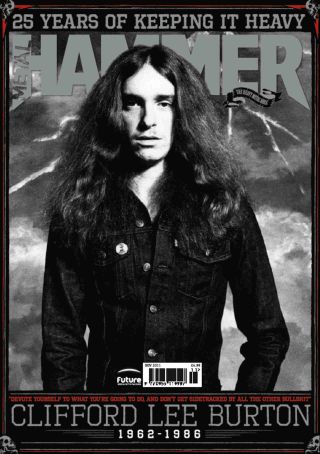
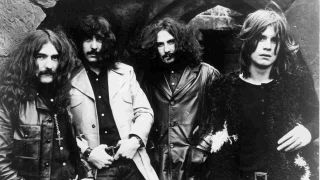






![The Rip - Portishead with Thom Yorke Live @ Latitude Festival, 2015-07-18 [MultiCam] - YouTube](https://img.youtube.com/vi/vzXRW5Yw4Uk/maxresdefault.jpg)





